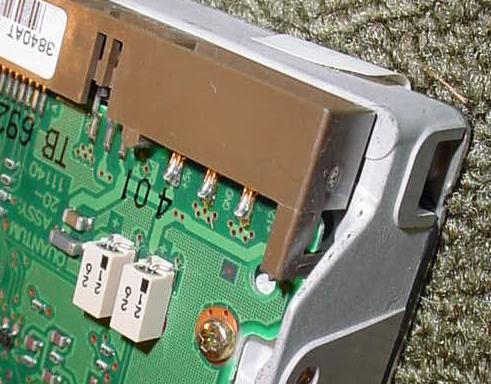
Photo: Red Hill.
Quantum Fireball SE
After a very successful 1997, Quantum outdid the excellent Fireball ST series with the even faster Fireball SE. The performance improvement was significant — from 132 to 158Mbit/sec is almost 20% — and that was coming from an already outstanding drive. Seagate and IBM both introduced even faster drives at the high end of the IDE market not long after these arrived, but had to go to 7200 RPM spindle speed to get more than a marginal improvement. In 5400 RPM drives, only the IBM Deskstar 16XP family was faster than the Fireball SE during its market life, and the difference was a trivial 4Mbit/sec. The SE was the benchmark drive of 1998, just as the Fireball ST had been in 1997.
Nevertheless, we mostly prefered IBM and Seagate drives as the SE's failure rate was a fraction higher than we would have liked. Perhaps with their Fireballs from this period, Quantum did what Western Digital had done 540MB days — gone a little too far in the speed direction while arriving at a speed-reliability compromise. Most drives fall clearly into one reliability category or another, but our Fireball SE rating is rather tentative, given the relatively small numbers of them we sold new. Indeed, were it not for a simple mechanical design problem with them (more on this in a moment), we might have been tempted to class them in the AA1 category.
The design flaw was a traditional Quantum weakness: the flimsy mounting for the power supply socket. A trivial seeming thing, but it made it all too easy to destroy a brand-new drive with very little force. Standard plastic four-pin PC power supply plugs vary marginally in size from one batch to another. If the plug is a little oversize or the socket a little too small, then it can take quite a firm push to insert the power lead. In the case of the Fireball SE, the mounting of the socket was so flimsy that it was all too easy to break the PCB and thus ruin the drive. (With most other drives, you would have to be a gorilla and a drunken one at that.)
Worst of all, Quantum displayed no willingness whatever to repair these damaged PCBs. If you broke it you just had to buy another one. Contrast this with Seagate's attitude when they had a similar problem with the old 270MB Medalist (one batch of which had a very stiff, slightly undersized socket connector, which could give rise to the same problem) — Seagate simply shipped new drives by return. Most Fireballs around this time had the same problem, but the newer ones were much better, stronger than most other brands. But you had to take great care if you were plugging in a Fireball SE, ST or TM.
| Performance | 1.13 | Reliability | AA2 |
| Data rate | 158 Mbit/sec | Spin rate | 5400 RPM |
| Seek time | 9.5ms | Buffer | 128k |
| Platter capacity | 2.11GB | Interface | ATA-33 |
| SE2.1 | 2.11GB | 2 MR heads | |
| SE3.2 | 3.23GB | 3 MR heads | * |
| SE4.3 | 4.31GB | 4 MR heads | ** |
| SE6.4 | 6.45GB | 8 MR heads | * |